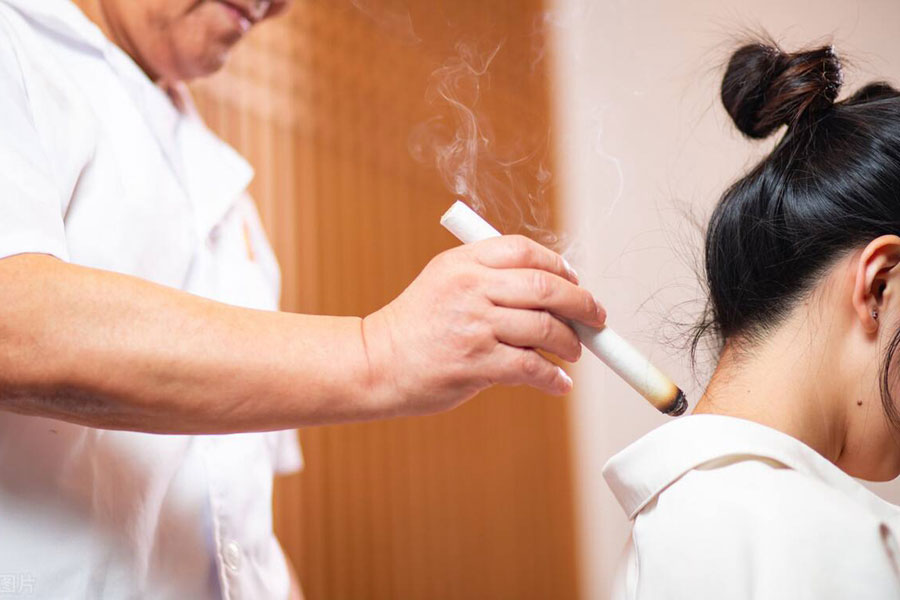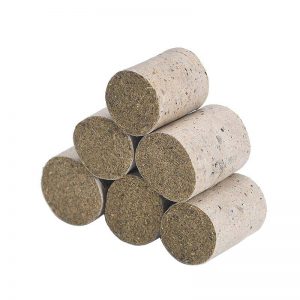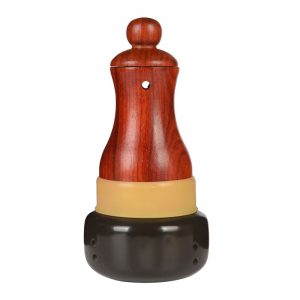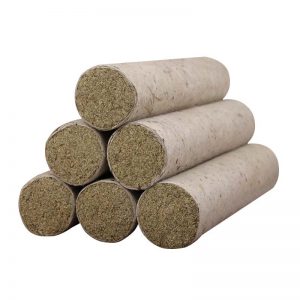Bronchial asthma is a common allergic disease that usually occurs or worsens at night or in the morning. Its manifestations include repeated gasping, shortness of breath, chest distress, and cough. This disease has many causes, including dust, pollen, mites, animal dander, fish or shellfish, pharmaceuticals, irritating gases, parasites, sudden changes in air temperature, and fatigue.
This disease is called panting in TCM. It is caused by dysfunction of the lung, spleen, and kidney, which leads to the accumulation of water dampness and eventual phlegm. The symptoms occur when the body is invaded by external pathogenic factors (allergens). The phlegm is brought upward by ascending qi, obstructing the normal movement of qi. Phlegm and qi bind together and block the airways. The lung then fails to diffuse and purify, leading to cough, panting, and the sound of phlegm in the throat. In serious cases, the patient finds it difficult to lie flat, experiences chest distress and has sticky phlegm that is difficult to expectorate.
Clinical manifestations of bronchial asthma
- Most patients have a history of allergies or family members with the disease. The symptoms are mainly repeated attacks of asthma with paroxysmal gasping, difficulty breathing, chest distress, and cough. Usually, the disease is related to certain allergens, cold air, or physical or chemical stimulation.
- During the attack, sporadic or diffuse wheezes can be heard in both lungs during expiration, and the exhalation duration is prolonged.
- The above symptoms can be relieved with treatment or on their own.
5 Acupuncture points for bronchial asthma
Disinhibiting qi and relieving panting are the basic therapeutic principles. During acute attacks, treat the branch to relieve the symptoms. When the acute stage is over, treat the root.
1. GV 14 Acupoint (Dazhui)
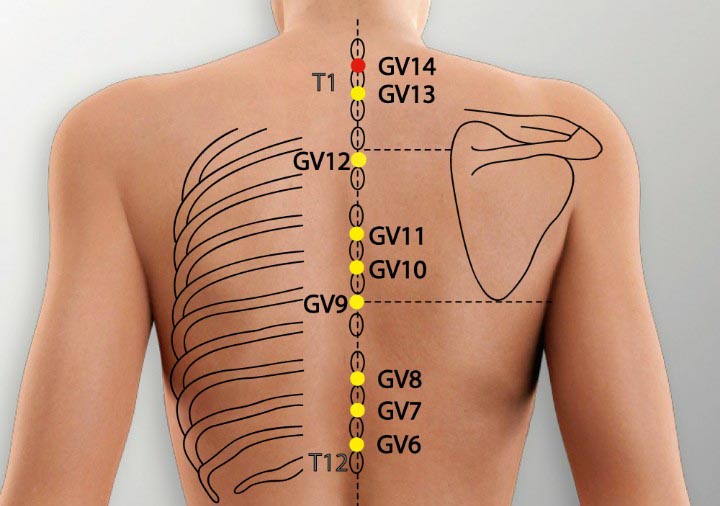
Location: On the posterior midline in the depression under the spinous process of the seventh cervical vertebrae.
Effect: Clears heat, releases the exterior, dissipates cold.
2. GV 9 Acupoint (Zhiyang)
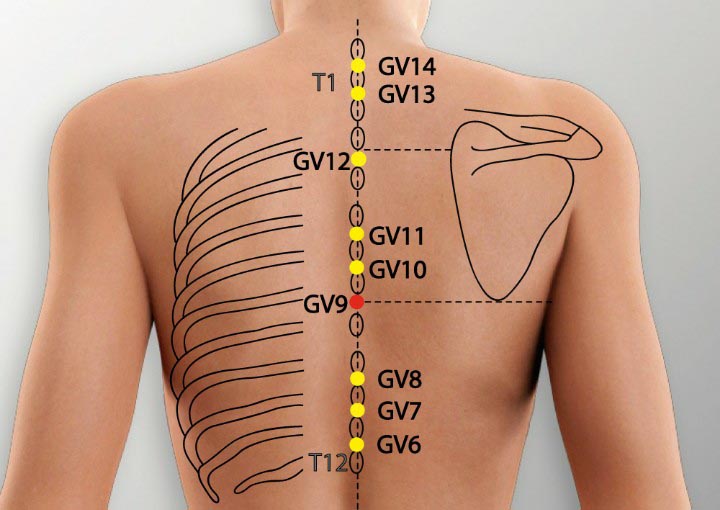
Location: On the posterior midline in the depression below the spinous process of the seventh thoracic vertebra.
Effect: Warms the du Mai, unblocks yang.
3. GV 4 Acupoint (Mingmen)
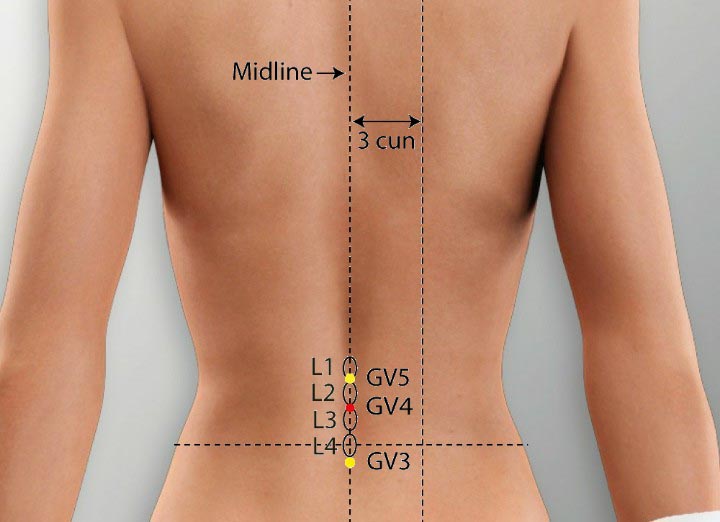
Location: On the lower back on the posterior midline in the depression under the spinous process of the second lumbar vertebrae.
Effect: Supplements and boosts kidney qi, improve qi reception, relieves panting.
4. BL 13 Acupoint (Feishu)
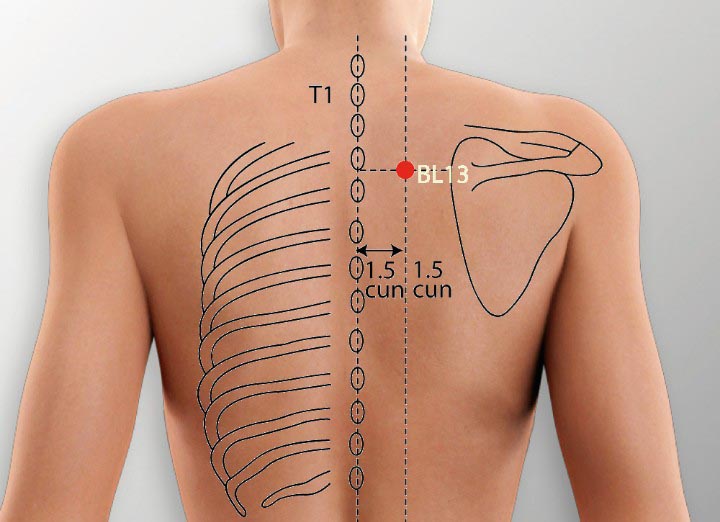
Location: On the back 1.5 cun lateral to the midline, level with the lower border of the spinous process of the third thoracic vertebrae.
Effect: Boosts the lung, dissolves phlegm, and relieves cough.
5. CV 8 Acupoint (Shenque)
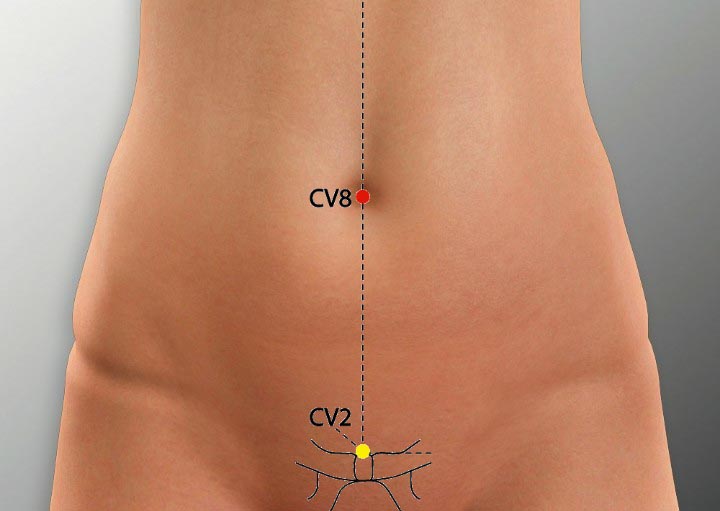
Location: In the center of the umbilicus.
Effect: Boosts the kidney, improves qi reception, and relieves panting.
Moxibustion treatment methods
- Back-and-forth moxibustion along the channels, and relaying moxibustion on GV 14, GV 9, and GV 4 to activate the yang qi of the Du Mai. The patient should feel heat flowing along the Du Mai from the vertex to the lower back. Since GV 14, GV 9, and GV 4 are important acupoints of the Du Mai, which governs the yang qi of the body, this point combination can warm the Du Mai and unblock yang. By supplementing the original yang and dispersing lung-wei, the whole body will feel comfortable.
- Double-point mild moxibustion on BL 13. The heat should penetrate into the thorax, or expand over the back and transmit to the upper limbs. BL 13 is where lung qi gathers on the back, and thus can be used to treat diseases of the lung by supplementing lung qi, dissolving phlegm, and relieving cough.
- Single-point mild moxibustion on CV 8. The heat should penetrate the abdominal cavity. Acupuncture is contraindicated at this point, but moxibustion can be used. It can powerfully supplement original qi, boost the kidney, improve qi reception and relieve panting.
Choose one or two groups of the above acupoints. Administer moxibustion once a day, with 10 days making a course of treatment. A break of two to five days should be given between treatment courses. In total, give two or three courses.
Conclusion
Moxibustion has a good therapeutic effect on asthma in both remission and chronic stages. For panting, cough, and chest distress due to cardiopulmonary disease, the primary disease should be given priority.
The patient should be advised to eat light food, and avoid wind and cold. Allergens should be avoided for patients with a history of allergies.

